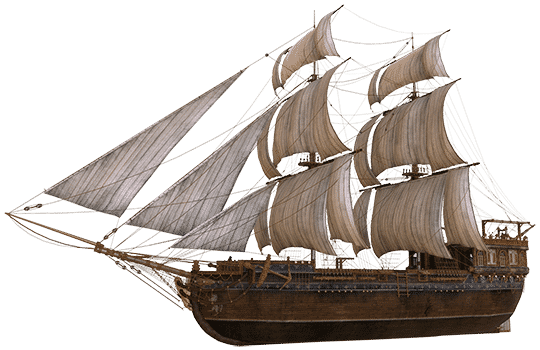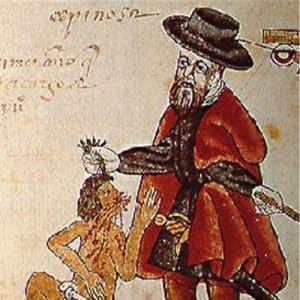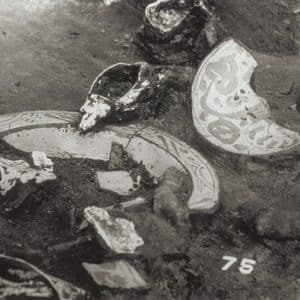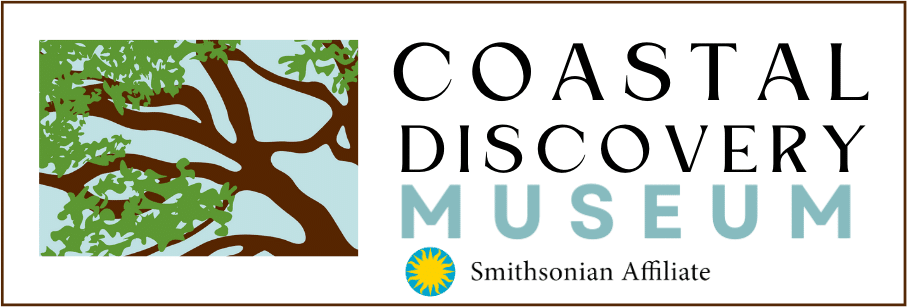The Santa Elena Center at the Coastal Discovery Museum
The Coastal Discovery Museum is home to the Santa Elena Center. This center of excellence provides a focus for the museum to explore the story of 16th Century Hilton Head and the area surrounding Port Royal Sound. The center is the result of ground-breaking work by the Santa Elena History Center in Beaufort to bring this fascinating story to light. Their museum closed after five years in the spring of 2020 and their resources were transferred to Coastal Discovery Museum. Major funding from Beaufort County and Hilton Head Island ATAX grants will allow CDM to create a new exhibition space on our property to tell this fascinating story
The deep natural harbor that we now call Port Royal Sound was one of the primary ports of call for the earliest colonists in what is now the United States. The Punta de Santa Elena was explored in 1526 by Lucas Vázquez de Ayllón, who established the first European municipality (location now lost) in what is now the United States. Over the next few decades there are periodic European visits to the sound. In 1562 French Huguenot Jean Ribault landed at Santa Elena and renamed the harbor “Port Royal” as the “one of the fairest havens of the world”. Ribault’s Charlesfort was short lived due to Native American and Spanish aggression. By 1566 the Spanish had retaken the area and founded the first capital of Spanish Florida, Santa Elena, on what is now Paris Island.
Over a 20-year period, the Spanish built four forts at this location. It was briefly abandoned in 1576 and rebuilt in 1577 before finally being abandoned permanently in 1587. Santa Elena was the first successful European settlement in what is now the United States. At its height, there were as many as 60 houses and a population of approximately 450 people. The story of Santa Elena is one of religion, geopolitics, cultural clashes, war, and struggles to survive. It also a little-known story, even in South Carolina, where France and Spain established their first beachheads in the New World.

The Santa Elena Center at the Coastal Discovery Museum
The Coastal Discovery Museum is home to the Santa Elena Center. This center of excellence provides a focus for the museum to explore the story of 16th Century Hilton Head and the area surrounding Port Royal Sound. The center is the result of ground-breaking work by the Santa Elena History Center in Beaufort to bring this fascinating story to light. Their museum closed after five years in the spring of 2020 and their resources were transferred to Coastal Discovery Museum. Major funding from Beaufort County and Hilton Head Island ATAX grants will allow CDM to create a new exhibition space on our property to tell this fascinating story
The deep natural harbor that we now call Port Royal Sound was one of the primary ports of call for the earliest colonists in what is now the United States. The Punta de Santa Elena was explored in 1526 by Lucas Vázquez de Ayllón, who established the first European municipality (location now lost) in what is now the United States. Over the next few decades there are periodic European visits to the sound. In 1562 French Huguenot Jean Ribault landed at Santa Elena and renamed the harbor “Port Royal” as the “one of the fairest havens of the world”. Ribault’s Charlesfort was short lived due to Native American and Spanish aggression. By 1566 the Spanish had retaken the area and founded the first capital of Spanish Florida, Santa Elena, on what is now Paris Island.
Over a 20-year period, the Spanish built four forts at this location. It was briefly abandoned in 1576 and rebuilt in 1577 before finally being abandoned permanently in 1587. Santa Elena was the first successful European settlement in what is now the United States. At its height, there were as many as 60 houses and a population of approximately 450 people. The story of Santa Elena is one of religion, geopolitics, cultural clashes, war, and struggles to survive. It also a little-known story, even in South Carolina, where France and Spain established their first beachheads in the New World.

BE IN THE KNOW
SIGNIFICANCE
OF THE SANTA ELENA

Image courtesy of The British Museum
Slavery: Europeans' enslavement of Native Americans began with Columbus. He brought Taino slaves to Spain on his return voyage and forced the Taino Indians to labor in the Spanish fields and mines in Hispaniola. By 1510 only 10% of the native population of Hispaniola had survived European disease and enslavement. Despite an official stance against enslaving Native American people, Spaniards raided other islands and the mainland for native people to enslave on Hispaniola and increased the importation of enslaved Africans to make up for the lack of forced labor. Santa Elena was likely first discovered by illicit slavers who left no written records but had become familiarized with the southeastern coast.
The story of Santa Elena is tied to the history of slavery in the New World. In 1526 Vázquez de Ayllón’s ship carried the first enslaved Africans to what is now the U.S. Native Americans continued to be enslaved by the Spanish in Florida and the Southwest under various legal tools. First amongst these was the encomienda system which rewarded conquerors with the labor of non-Christian people who they had subjugated. Even long after the Carolinas were a British colony, exportation of enslaved Native Americans formed a significant part of their economy.
Transatlantic exchange: The introduction of Old-World diseases decimated Native populations and the transatlantic slave trade in which millions of men, women, and children were forcibly stolen from their communities and transported to the Americas are the most notorious of these exchanges. But there were many other important exchanges that transformed foodways and lifestyles on both sides of the ocean. Native American crops like corn, potatoes, tomatoes, peanuts, and pumpkins went to the rest of the world. Domesticated animals like the horse, cow, and chicken were introduced to the Americas. Of particular interest at Santa Elena, is the introduction of the European Honeybee to the Americas and the transportation of Spanish horses which were left on the barrier islands and evolved into the Marsh Tackies that we have here today.

SIGNIFICANCE
OF THE SANTA ELENASlavery: Europeans' enslavement of Native Americans began with Columbus. He brought Taino slaves to Spain on his return voyage and forced the Taino Indians to labor in the Spanish fields and mines in Hispaniola. By 1510 only 10% of the native population of Hispaniola had survived European disease and enslavement. Despite an official stance against enslaving Native American people, Spaniards raided other islands and the mainland for native people to enslave on Hispaniola and increased the importation of enslaved Africans to make up for the lack of forced labor. Santa Elena was likely first discovered by illicit slavers who left no written records but had become familiarized with the southeastern coast.
The story of Santa Elena is tied to the history of slavery in the New World. In 1526 Vázquez de Ayllón’s ship carried the first enslaved Africans to what is now the U.S. Native Americans continued to be enslaved by the Spanish in Florida and the Southwest under various legal tools. First amongst these was the encomienda system which rewarded conquerors with the labor of non-Christian people who they had subjugated. Even long after the Carolinas were a British colony, exportation of enslaved Native Americans formed a significant part of their economy.

ARCHAEOLOGY
OF THE SANTA ELENA
The Archaeological site on Parris Island has been known since the 1850s when enslaved people uncovered an ancient gate. It was originally believed that this was a French artifact from Charlesfort which was well known because of surviving drawings by Jacques le Moyne who traveled there in the 16th century. Subsequent archaeological investigations showed multiple Spanish occupations and an extremely well-preserved site. In addition to forts and houses, there are also wells with preserved organic materials and the first pottery kiln known to exist in what is now the United States. Even though more than a hundred years have passed since the first formal excavations, probably less than 5% of Santa Elena has been uncovered.

ARCHAEOLOGY
OF THE SANTA ELENAThe Archaeological site on Parris Island has been known since the 1850s when enslaved people uncovered an ancient gate. It was originally believed that this was a French artifact from Charlesfort which was well known because of surviving drawings by Jacques le Moyne who traveled there in the 16th century. Subsequent archaeological investigations showed multiple Spanish occupations and an extremely well-preserved site. In addition to forts and houses, there are also wells with preserved organic materials and the first pottery kiln known to exist in what is now the United States. Even though more than a hundred years have passed since the first formal excavations, probably less than 5% of Santa Elena has been uncovered.


SANTA ELENA
MUSEUM
The Santa Elena Foundation was formed in 2014 and opened the Santa Elena History Center in Beaufort SC on April 2016. Over the next four years, they have served over 100,000 visitors and participants in educational and research programs including: The Lowcountry Fair with Historical Flair, the Santa Elena Scholars Conference, visits by historical museum ships, a lecture series presented with the Osher Lifelong Learning Institute, and numerous programs delivered at the Santa Elena History Center and regionally. On August 2, 2020, the Santa Elena Foundation dissolved and all of its assets were transferred to CDM so that we could continue all of the great work that they accomplished.
Coastal Discovery Museum has received $1.1 million in funding to renovate one of our buildings and install a permanent exhibition dedicated to the story of Santa Elena, as well as a collections storage facility to house our archaeological artifacts and other collections.
While the museum is still seeking the final $400,000 in funding to complete this project, work has already started, and we expect the building to be ready to open in 2025. If you would like to learn more and support this project, please contact Rex Garniewicz at [email protected].
SANTA ELENA
MUSEUM
The Santa Elena Foundation was formed in 2014 and opened the Santa Elena History Center in Beaufort SC on April 2016. Over the next four years, they have served over 100,000 visitors and participants in educational and research programs including: The Lowcountry Fair with Historical Flair, the Santa Elena Scholars Conference, visits by historical museum ships, a lecture series presented with the Osher Lifelong Learning Institute, and numerous programs delivered at the Santa Elena History Center and regionally. On August 2, 2020, the Santa Elena Foundation dissolved and all of its assets were transferred to CDM so that we could continue all of the great work that they accomplished.
Coastal Discovery Museum has received $1.1 million in funding to renovate one of our buildings and install a permanent exhibition dedicated to the story of Santa Elena, as well as a collections storage facility to house our archaeological artifacts and other collections.
While the museum is still seeking the final $400,000 in funding to complete this project, work has already started, and we expect the building to be ready to open in 2025. If you would like to learn more and support this project, please contact Rex Garniewicz at [email protected].


